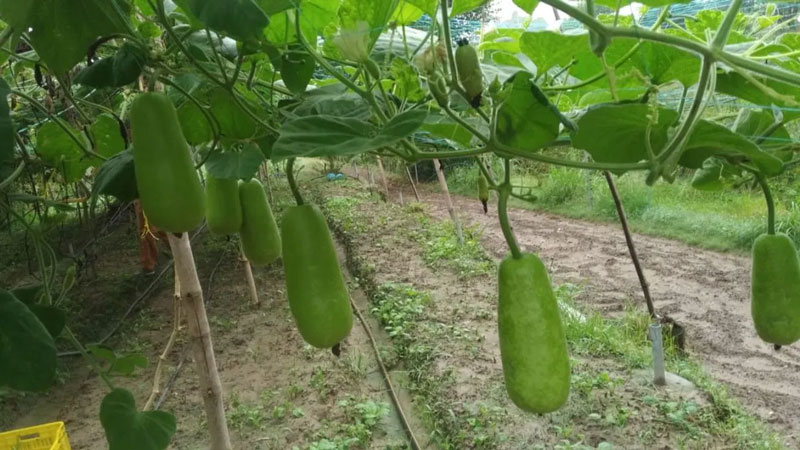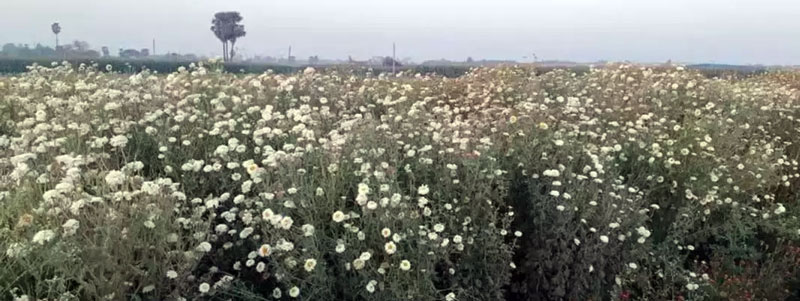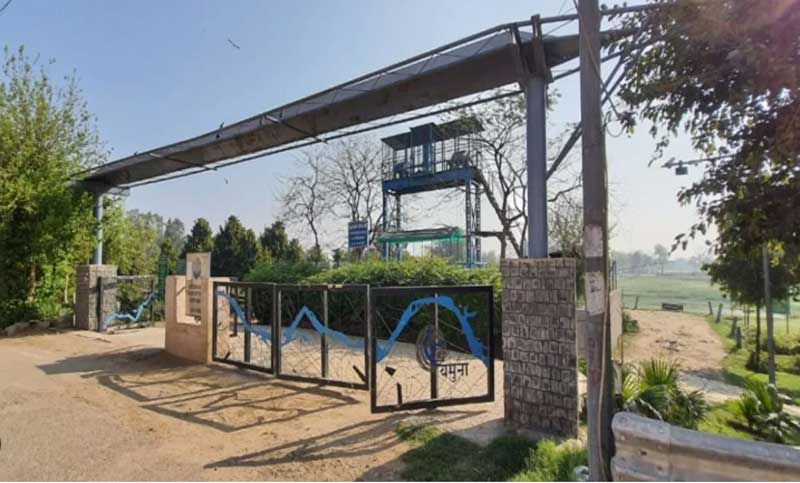Sacred Garden
Ms Tejal Patel
Department of Floriculture and Landscape Architecture
ASPEE College of Horticulture and Forestry
Navsari Agricultural University, Navsari, Gujarat
A sacred garden is a religiously influenced garden, often found on the temple. Sacred gardens are an ancient tradition in many major cultures, including our own. They are the cultivated counterparts of the sacred groves and are a place for meditation, spiritual awakening and celebration. Although, there is less archaeological evidence of early gardens in India, the Hindu scriptures and books (Ramayana, Abijnana Shakuntalam, Mrichchakatika etc.) give remarkably detailed description of elaborate gardens with flower beds, lotus ponds, fruiting trees, creepers and shady spaces. In fact, gardens are a symbol of paradise in Hindu philosophy and art. Trees are known to use as sacred since, ancient times and we Indians also have the tradition of ‘Tree-worshiping’. This tradition is being followed in modern age also. The sanctity of the plant material is hidden in its radiation of bio- plasma i.e., ‘Aura’. The sight of sacred plants, their flower colour, fragrance and cool shade have soothing effect on mind, body and soul. Our saints mediated and were enlightened under particular trees and also gave their preaching under the tree shade. Our old epics like Vedas, Ramayana and Mahabharata we find mention of revered plants like Ocimum sanctum, Lotus, Ficus religiosa, Ficus benghalensis, Anthocephalus cadamba, Butea mosnosperma etc. In the scriptures, we also find depiction of Kalpavriksha, Kalplata, Chaityavriksha etc. an indication of tree worship. A garden based on “Sacred plants” as per Indian mythology is referred as “Sacred Garden”. Sacred gardens consist of Shiva Panchayatana, Saptrushi Vana, Navagraha Vana, Ashoka Vana and Nandana Vana. Sacred garden is more like an unconventional natural temple without an idol but plant species providing physical and mental solace. Some plants are called sacred as they are closely associated with deity like Bilva tree with Lord Shiva and Kadam tree and Tulsi plant with Lord Krishna.

Types of Sacred Garden
Shiva Panchayatana
The shiva Panchayatana is one of the favourite forms of Shiva worship in which the lord is seated a rounded by Vishnu in the northeast, sun god in the southeast, Ganesh in the southeast and goddess Ambika in the northeast directions. This concept of Shiva Panchayatana can be created by growing the plant species associated with the members of the Panchayatana.

Nandana Vana:
Nandana Vana is a kind of celestial garden as portrayed by our ancient writers. Thus, these are tributes by our famous writers. Nandana Vana has been dedicated to Lord Krishna. Kalidasa, the famous writer, has mention ten trees including ashwatha in “Mangalashataka” where he signifies this evergreen and ever flowering garden full of fruit yielding trees as a harbinger for the well-being of the world at large. Poet Ashvaghosha described about this garden in his works. Accordingly, this type of garden consists of the tree species viz., aswatha, vata, chandana, mandara, kalpdhruma, jamboo, nimbi, choota, Sarala.
Saptarshi Vana
It is the garden of seven celebrated Rishis viz., Kashyapa, Atri, Bhardwaja, Vishwamitra, Gautama, Jamadagni and Vashista. In this garden the plants associated with each of the Rishis have been given in the following table:

Navagraha Vana
The pooja of Navagrahas is one of the most popular forms of worship found to prevail in many parts of the country. Navagraha garden is the garden which is designed by planting of particular plant species signifying particular planet in the same position of the solar system:

Rassi Vana
Rassi Vana refers to a garden comprising of plant species signifying rassi ‘zodiac signs’. Thus, it is based on twelve Hindu zodiac signs and planet ruling them. Particular plant species are identified to represent as the lord of species zodiac signs. Such species are selected and raised in the garden of the reflect the effect of the ‘rassi vana’.

Ashoka Vana
The reference of “Ashoka Vana” is found in the famous epic ‘Ramayana’ as given by Valmiki. Every Indian must be knowing about the Ashoka Vana where Sita was held in captivity by Ravana. Based on the description given, the species mentioned can be planted in the same fashion to recreate the modern version of the Ashoka Vana. The tree planted in the garden are: Ashoka, champeya, Bakula, tindika, vanjula, karnikara, champaka, amalaka, Rasala, Kritamala, Kataka, makanda, vetasa, nagakesara, ketaki, kunda, kadamba, Hintala, patala, tamala, sala, palasha, panasa, tala.
Buddhists gardens
In Buddhism, gardens are described as a place for meditation and healing. There were beautiful gardens in Nalanda and Taxila. It is even believed that Lord Buddha was born under a tree at the Lumbini garden (now in Nepal), which is now listed as a World Heritage Site. The monasteries played a central part of the life in the monasteries during early periods. Even today, monasteries in India have attractive gardens attached to them.

Bagh (Bagicha)
They are ethno-silvi-horticultural gardens, traditionally planted near tanks, settlements or amidst forests, especially in the northern parts of our country. The biodiversity mainly consists of utility trees such as Mangifera indica, Madhuca latifolia, Syzygium cuminii etc. Green felling is totally banned in these gardens. Also, there is temple or separate space dedicated to the Gods (or village deity). For example, an excellent Bagh exists near a village inside the Darrah Wildlife Sanctuary in Kota.
Gardens of Paradise
Mughal Gardens are square or rectangular in shape, along the lines of Persian gardens. They are generally enclosed by a high wall with imposing gates on four sides. The garden is an orderly view of paradise. They are generally associated with tombs, since the soul of the dead person is believed to have reached paradise, which is replicated on earth in the garden. The tomb garden is called Char Bagh and is based on hasht–vihisht or eight paradises plan making a cross-axial garden. The well-known tomb gardens of India are Humayun’s Tomb (1571), Delhi; Akbar’s Tomb (1613), Sikandra, Agra; Taj Mahal (1630), Agra; and Bibi Ka Maqbara (1661) Aurangabad.
Sacred Garden in India :

Hindu Temple Garden:
Hinduism is the world’s third largest religion, and many historians believe it is the world’s oldest religion. It is the predominant religion in India and Nepal, and is widely practiced in countries around the world, including Canada and the United States. Hindu temple gardens are places of worship, designed to connect people with gods. The gardens are rich in symbolism that reflects Hindu values.
A Hindu Garden is a tropical paradise resplendent with beautiful tropical flowers that explode with bright color and sweet aroma. Other features include shady trees, walkways, water features (such as natural ponds, waterfalls or streams), and quiet places to sit and meditate. Most Hindu Gardens include statues, pedestals, lanterns and potted plants. Hindu temple gardens are carefully planned to reflect the belief that everything is connected.

















